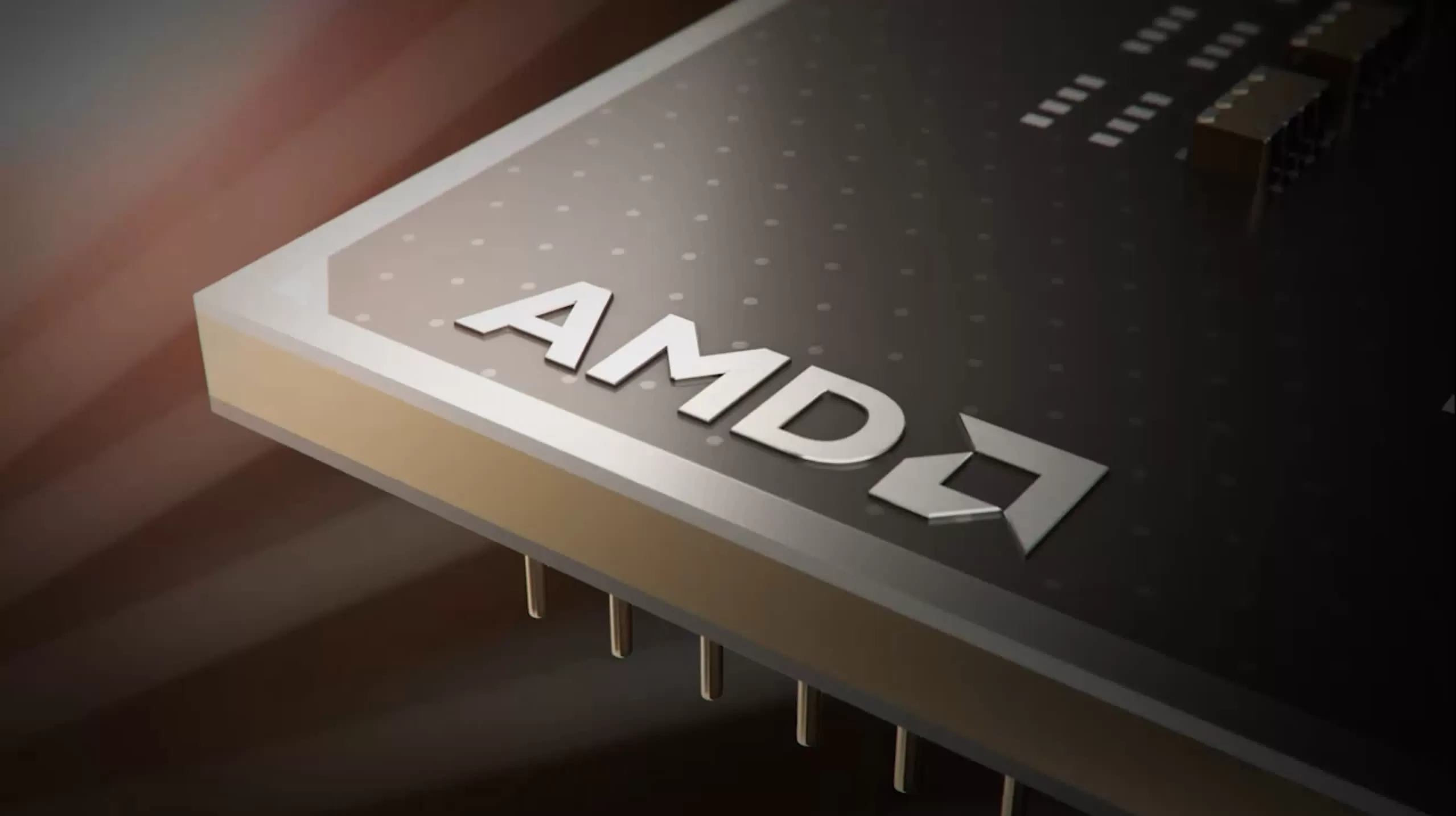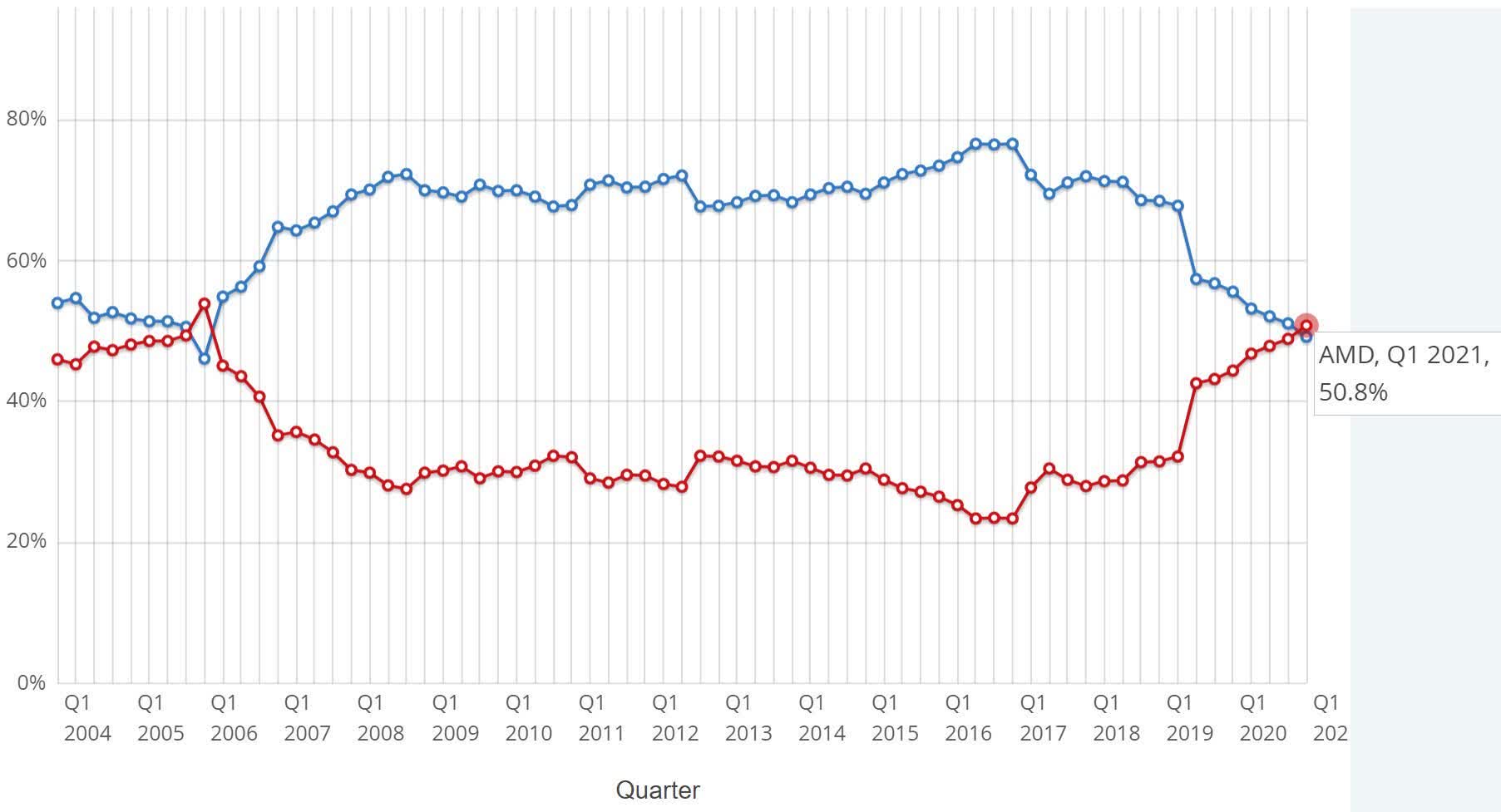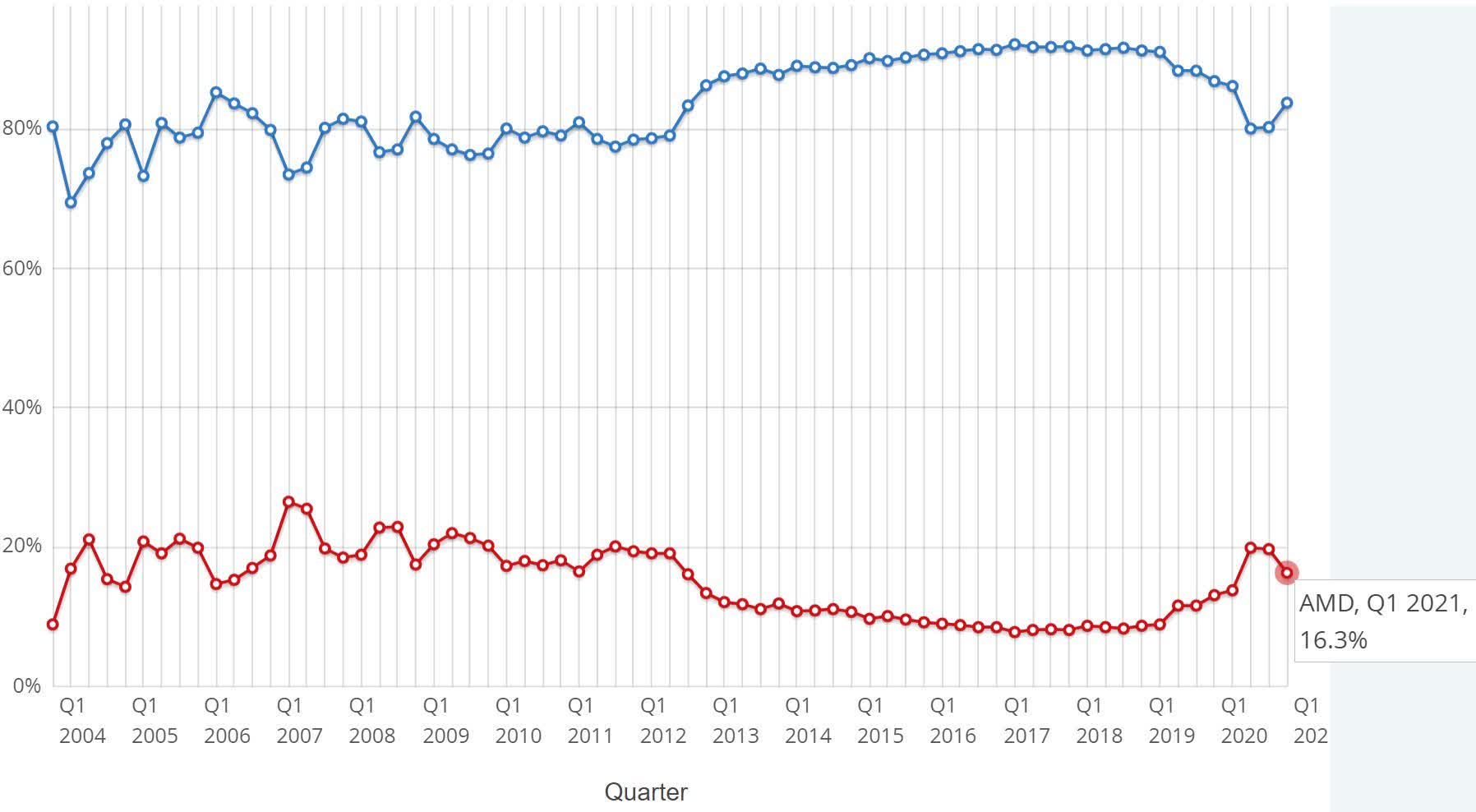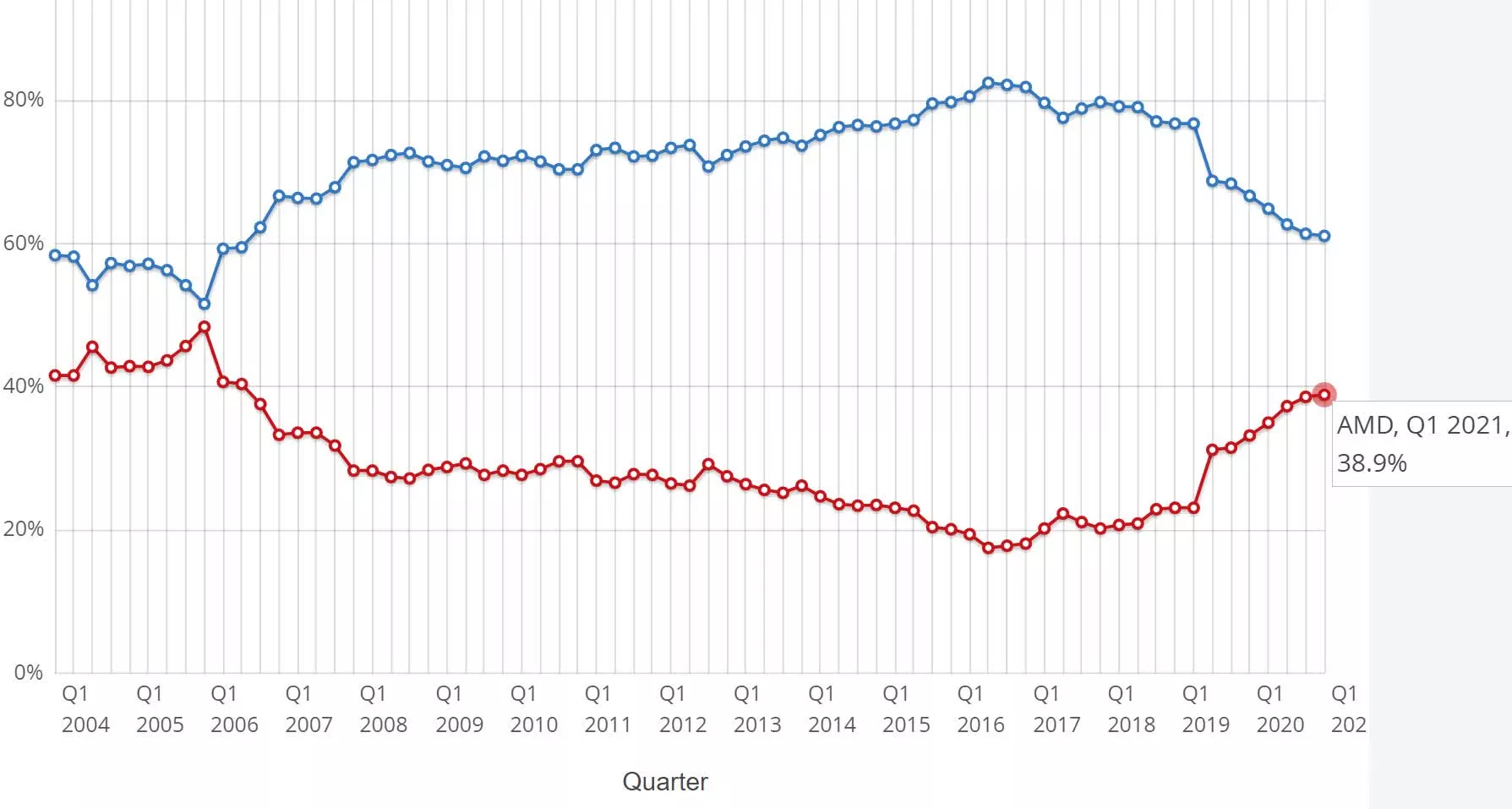What just happened? For the first time in fifteen years, AMD has overtaken Intel when it comes to global desktop CPU market share, according to PassMark. The news signifies another step in AMD closing the gap on what was once the undisputed leader in the consumer processor space.

Benchmarking giant PassMark Software’s latest results for Q1 2021 show AMD taking a 50.8 percent share of the worldwide desktop CPU market, leaving Intel with 49.2 percent. The last time team red went ahead was way back in in Q1 2006, though its 53.9 percent lead back then lasted only a single quarter.
Desktop CPU Market Share
Chipzilla still dominates in the laptop segment with an 83.8 percent share while AMD sits on 16.3 percent. The difference is even more pronounced in the server space: Intel has 98.6 percent, AMD just 1.4 percent.
Laptop CPU Market Share
However, looking at all CPUs, AMD’s new lead in desktop means the gap between it and Intel is the smallest (around 22.2 percent) it has been in the last 15 years.
AMD vs Intel Market Share (All CPUs)
PassMark notes that its data is made up of thousands of PerformanceTest benchmark (download here) results and, as its software only runs on Windows OS, the charts do not reflect non-Windows users.
We’ve seen AMD breathing down the neck of its rival since the launch of the Ryzen processors in 2017, with every generation of the architecture putting increasing pressure on former fan-favorite Intel. We love the 7nm Ryzen 5000 series—the only real problem is finding one.
Intel also has the added worry of 5nm Zen 4 arriving later this year. Its Rocket Lake processors, which use a variant of Sunny Cove backported to the 14nm process, are reportedly dropping in March.
https://www.techspot.com/news/88148-amd-desktop-cpu-share-passes-intel-first-time.html



